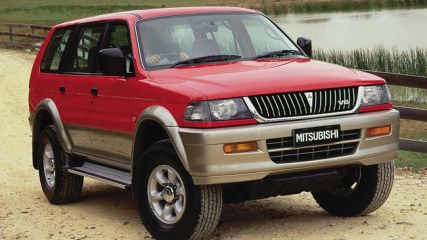Used Mitsubishi Challenger review: 2009-2010
By Graham Smith · 08 Dec 2011
Most SUV buyers simply want a wagon to cart the kids to school and pick up the shopping at the supermarket, rarely do they want to head off the beaten track, but Mitsubishi reckoned there were enough SUV owners who did to produce a wagon that was capable offroad.The new PB Challenger introduced in 2009 was just such a vehicle and it stood apart from the regular SUV pretenders. Sitting between the Outlander soft-roader and the Pajero four-wheel drive the Challenger offered an attractive blend of town manners and real bush capability.While the Challenger sat on a new platform it shared many components with the Triton ute, such as the front chassis and suspension, turbo - diesel engine, transmission, four-wheel drive system and rear axle. The four-wheel drive system that gives it its off-road capability boasts a central diff, dual range, and a lockable rear diff.Its offroad ability is enhanced by its high ground clearance and good, approach, departure and ramp angles. There was just one engine on offer and that was a 2.5-litre common - rail turbo - diesel engine that delivered plenty of low-down grunt to cope with the tough going without being out of its comfort zone around town.Two transmissions were available, a five-speed manual and a five - speed auto, the latter with manual shifting. Two models were offered, the entry level LS that came with the manual gearbox and five seats, and the five-seater XLS that had the automatic transmission. The LS could be optioned up with the auto, and both models could be upgraded to seven seats at extra cost.The XLS was the model with all the fruit with leather trim, satnav, reversing camera, parking sensors, privacy glass, headlight washers, Bluetooth, and upgraded sound. Inside, there is good room all round for all occupants who sit on comfortable seats.When specified the third row of seats has a 50/50 split/fold function and there's still room for a decent amount of luggage behind the third row. Access to the rear is through a lift-up tailgate rather than a swing out door, handier when you're towing, and the spare wheel is located underneath.IN THE SHOPThe Challenger is a solid unit with pretty decent build quality that is giving little trouble in the field. There are no serious flaws from the factory, so focus on issues that have resulted from its use. In particular pay close attention to the exterior and underbody for signs of offroad use. Mitsubishi was keen to point out that the Challenger would cope with being beaten around the bush, and some owners may well have taken them up on the challenge.Look for bent fittings and appendages underneath, exhaust hangers, suspension mountings etc. Also look for anything that might indicate water entry into vitals located underneath. On the outside look for scratches, dents and bumps from having bounced off the scenery.Continue shopping should you suspect a car has been used offroad. Check for a service record showing oil changes.IN A CRASHFour stars out of a possible five isn't a bad result, particularly given the Challenger sits on a ladder frame chassis, which isn't as crash friendly as a unitary body like most SUVs have. But it's got a raft of airbags, front and side, as well as the now expected ABS braking and anti-skid electronics.UNDER THE PUMPThe turbo-diesel engine ensures the Challenger delivers decent fuel mileage, with the manual coming in at 8.3 L/100 km and the auto at 9.8 L/100 km according to Mitsubishi's claims.MITSUBISHI CHALLENGER - 2009-2010Price new: $44,490 to $58,590 Engine: 2.5-litre 4-cylinder turbo-diesel, 131 kW/350 NmTransmission: 5-speed auto, five-speed manual, 4WDEconomy: 8.3-9.8 L/100 kmBody: 4-door wagonVariants: LS, XLS Safety: 4-star ANCAP



.jpg)



